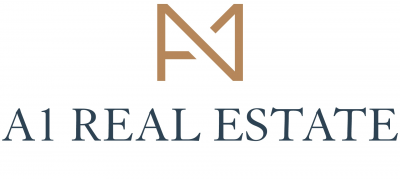
Hôtel vs appart-hôtel vs appartement meublé : quelle option pour un séjour de 3 à 12 mois à Paris ?
The landlord must provide the tenant with decent housing. Decent housing must meet 5 criteria: a mandatory minimum surface area, the absence of risk to the safety and health of the tenant, the absence of pests and parasites, a minimum energy performance and the provision of certain equipment.
What are the tenant's remedies?
- In empty rental:
The tenant must inform the landlord in writing of the signs of non-compliance of the dwelling with the decency criteria.
If the owner accepts the signs of non-decency, the tenant must specify by registered letter with acknowledgment of receipt: the compliance work and the deadlines for carrying out this work.
If the owner refuses and contests the signs of non-decency, the tenant must give formal notice to the owner to carry out the compliance work, by registered letter with acknowledgment of receipt.
After a period of 2 months, if there is no response from the landlord or if the disagreement persists, the tenant can refer the matter to the court registry.
If the court judge finds that the dwelling does not meet the standards of decency, he or she may:
- Forcing the owner to do the work
- Impose the rent reduction
- Impose damages to be paid to the tenant
The tenant must under no circumstances stop paying (all or part) his rent!
2.Furnished rental:
The tenant must inform the landlord in writing of the signs of non-compliance of the dwelling with the decency criteria.
If the owner accepts the signs of non-decency, the tenant must specify by registered letter with acknowledgment of receipt: the compliance work and the deadlines for carrying out this work.
If the owner refuses and contests the signs of non-decency, the tenant must give formal notice to the owner to carry out the compliance work, by registered letter with acknowledgment of receipt.
After a period of 2 months, if there is no response from the landlord or if the disagreement persists, the tenant can refer the matter to the court registry.
If the court judge finds that the dwelling does not meet the standards of decency, he or she may:
- Forcing the owner to do the work
- Impose the rent reduction
- Impose damages to be paid to the tenant
The tenant must under no circumstances stop paying (all or part) his rent!
Can a diagnosis show that housing is decent?
There is a diagnosis of housing decency that identifies all the elements (objectively) that do not meet the criteria of decency. Called the finding of decent housing, this diagnosis makes it possible to ensure the decency of housing.
Which dwellings are concerned by the principle of "decency"?
The dwellings concerned are dwellings rented as a principal residence or for professional use or main residence: empty or furnished rentals, company housing, HLM or any other dwelling subject to the 1948 law.
What are the obligations of the landlord?
The landlord has the obligation to offer tenants decent housing, meeting the characteristics defined by the decree.
The owner is not required to redo it or to use a building specialist to certify decency. The owner must be able to verify alone the existence of a risk to health or safety: is the humidity not excessive? Is the electrical installation defective? Are the railings on the windows solid?
What is decent housing in empty rental?
- Surface of the dwelling
- In single lease : minimum surface of 16 m² for 2 roommates. For each additional roommate, it takes an additional 9 m²
- Several leases : Each roommate must have a room with a surface area of at least 9 m2 and a volume of at least 20 m3 (common rooms not taken into account)
2. Safety and health of the tenant
- The accommodation ensures the closed and the covered.
- The structural work of the dwelling and its accesses is in a good state of maintenance and solidity and protects the premises against runoff and upwelling.
- The accommodation is protected against parasitic air infiltration.
- The doors and windows of the dwelling have sufficient airtightness.
- The walls and walls of the dwelling facing the outside have sufficient airtightness.
- Room openings leading to unheated ancillary rooms are equipped with doors or windows.
- The chimneys are equipped with hatches.
- The restraint systems for persons (guardrails, stairs, etc.) located in the dwelling and its accesses are in a compliant condition.
- The nature, state of conservation and maintenance of building materials, pipes and coatings do not pose a risk to the health and safety of tenants.
- The electricity and gas networks and connections comply with safety standards and are in good working order.
- The heating and hot water production equipment complies with safety standards and is in good working order.
- The housing allows sufficient ventilation.
- The opening devices and any ventilation devices of the dwellings are in good condition.
- The main rooms have sufficient natural illumination and an opening giving to the open air, or on a glazed volume giving to the open air.
- A room located in the basement cannot be offered for rent.
3.Absence of pests
The accommodation is not infested with pests (rats, etc.) or parasites (bed fleas, cockroaches, etc.).
4. Housing facilities
The accommodation must include:
- An installation concerning heating
- Energy supply and combustion product disposal devices.
- A drinking water supply facility with sufficient pressure and flow
- Sewage disposal systems (with siphons)
- A kitchen allowing the installation of a cooking appliance and including a connected sink
- A sanitary installation inside the accommodation (WC, separated from the kitchen and the room where meals are taken).
- Equipment for body toilets (bath or shower) supplied with hot and cold water and equipped with sewage disposal.
- An electrical network
- Sufficient lighting of all rooms and accesses
- How common household appliances work
5.Energy performance of housing
The dwelling must not exceed a certain energy performance threshold.
For rental contracts signed and concluded since 1 January 2023, the dwelling is considered decent if the energy consumption is less than 450 kWh of final energy/m² of living space/year.
> Consumption estimated by the energy performance diagnosis (DPE).
What is decent furnished accommodation?
- Surface of the dwelling
- In single lease : minimum surface of 16 m² for 2 roommates. For each additional roommate, it takes an additional 9 m²
- Several leases: Each roommate must have a room with a surface area of at least 9 m2 and a volume of at least 20 m3 (common rooms not taken into account)
2.Safety and health of the tenant
- The accommodation ensures the closed and the covered.
- The structural work of the dwelling and its accesses is in a good state of maintenance and solidity and protects the premises against runoff and upwelling.
- The accommodation is protected against parasitic air infiltration.
- The doors and windows of the dwelling have sufficient airtightness.
- The walls and walls of the dwelling facing the outside have sufficient airtightness.
- Room openings leading to unheated ancillary rooms are equipped with doors or windows.
- The chimneys are equipped with hatches.
- The restraint systems for persons (guardrails, stairs, etc.) located in the dwelling and its accesses are in a compliant condition.
- The nature, state of conservation and maintenance of building materials, pipes and coatings do not pose a risk to the health and safety of tenants.
- The electricity and gas networks and connections comply with safety standards and are in good working order.
- The heating and hot water production equipment complies with safety standards and is in good working order.
- The housing allows sufficient ventilation.
- The opening devices and any ventilation devices of the dwellings are in good condition.
- The main rooms have sufficient natural illumination and an opening giving to the open air, or on a glazed volume giving to the open air.
- A room located in the basement cannot be offered for rent.
3.Absence of pests
The accommodation is not infested with pests (rats, etc.) or parasites (bed fleas, cockroaches, etc.).
4.Housing facilities
The accommodation must include:
- An installation concerning heating
- Energy supply and combustion product disposal devices.
- A drinking water supply facility with sufficient pressure and flow
- Sewage disposal systems (with siphons)
- A kitchen allowing the installation of a cooking appliance and including a connected sink
- A sanitary installation inside the accommodation (WC, separated from the kitchen and the room where meals are taken).
- Equipment for body toilets (bath or shower) supplied with hot and cold water and equipped with sewage disposal.
- An electrical network
- Sufficient lighting of all rooms and accesses
- How common household appliances work
5.Energy performance of housing
The dwelling must not exceed a certain energy performance threshold.
For rental contracts signed and concluded since 1 January 2023, the dwelling is considered decent if the energy consumption is less than 450 kWh of final energy/m² of living space/year.
> Estimated consumption by the energy performance diagnosis (DPE).
- The landlord must provide the tenant with decent housing. Decent housing must meet 5 criteria: a mandatory minimum surface area, the absence of risk to the safety and health of the tenant, the absence of pests and parasites, a minimum energy performance and the provision of certain equipment.
- This concerns both empty and furnished rentals.
- The tenant must inform the landlord in writing of the signs of non-compliance of the dwelling with the decency criteria.
- If the owner refuses and contests the signs of non-decency, the tenant must give formal notice to the owner to carry out the compliance work, by registered letter with acknowledgment of receipt.
- There is a diagnosis of housing decency that identifies all the elements (objectively) that do not meet the criteria of decency.

You want to
to sell in Paris or its surroundings ?
Posted on 28/08/2023 by
Andy LECUYER




